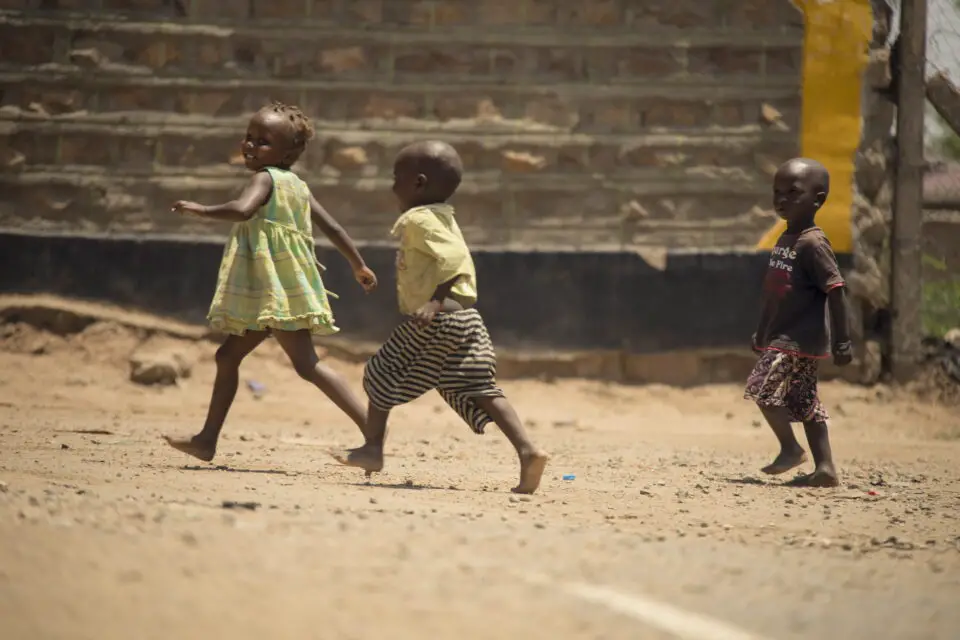Examples of Indigenous Tagging Games in Kenya/Types of Indigenous Tagging Games Played in Kenya

Indigenous tagging games in Kenya, like in many cultures, are traditional games that have been passed down through generations.
These games often reflect the community’s way of life, social structures, and environment.
Here are two examples:
Indigenous Tagging Games in Kenya #1: Kati (or Kati-Kati)
- Description: Kati is a popular game among children in Kenya, particularly among the Kikuyu community. It involves two teams, with one team standing in the middle while the other team stands at opposite ends of the playing area. The goal is for the players in the middle to avoid being hit by a ball that the players on the ends throw at them. If a player in the middle is hit by the ball, they are out. The game continues until all players in the middle are hit, after which the teams switch roles.
READ ALSO: Final Thoughts on Traditional Sports in Kenya & More
2. Cha Mama (Mother’s Game)
- How it’s played: One child plays the “mother,” while others run around in an attempt to avoid being tagged. If the mother tags you, you become the next “mother.”
- Cultural significance: This game mirrors family roles and responsibilities, emphasizing respect and fun in social interactions.
Table of Contents
Indigenous Floor Games in Kenya
Indigenous floor games in Kenya are traditional games that have been passed down through generations, often played on the ground or on smooth surfaces.
These games not only serve as entertainment but also play a role in preserving cultural heritage and fostering social interaction. Here are a few notable examples:
Kenyan Indigenous Games #1. Ajua Board Game (Bao)

Ajua, also known as Bao in coastal regions, is a board game traditionally played with seeds or stones and a carved wooden board with rows of pits. The objective is to capture more seeds than the opponent by strategically moving them around the board. It’s a popular game among the Swahili communities along the Kenyan coast and is recognized for its complex strategy and skill.
2. Pacho/Pate
This is a drawing game that involves creating patterns or pictures on the ground, usually using a stick. Children take turns drawing while telling stories or riddles that complement the images. It’s a form of creative expression and storytelling, often played in rural areas.
3. Kati
Kati is a game similar to dodgeball, where players throw a ball at a single player or group trying to avoid being hit. Although not exclusively a floor game, it is often played on dirt or sand surfaces. The game is energetic and helps improve reflexes and coordination.
4. Ndoto (Dreams)
This is a form of hopscotch played by drawing a grid on the ground. Players take turns throwing a small stone or object into numbered squares and then hop through the grid, skipping the square where the object landed. The game promotes balance and counting skills.
5. Shake
Shake involves drawing lines on the ground and tossing small stones or seeds onto the lines without them falling off. Players take turns, and the one who places the most stones accurately wins. It’s a simple yet engaging game that tests precision and concentration.
READ ALSO: 3 Traditional Games in Kenya
Types of Indigenous Rope Games in Kenya
Rope games have been a cherished part of Kenyan childhood for generations, blending physical activity, creativity, and community interaction. Using locally available materials like sisal ropes, vines, or improvised cloth ropes, children and even adults engage in games that enhance coordination, endurance, and social bonding. Below are some examples of indigenous rope games traditionally played in Kenya:
1. Kamba (Skipping Rope Games)
- How it’s played:
- A rope is swung in a circular motion, and players take turns jumping over it.
- Variations include:
- Single Skipping: One player skips using their own rope.
- Group Skipping: Two players swing the rope while others jump in sequence or together.
- Songs and chants often accompany the skipping rhythm.
- Cultural significance: Encourages rhythm, agility, and teamwork. The accompanying songs often reflect local stories or humor, passing down oral traditions.
2. Chakacha Rope
- How it’s played:
- Two ropes are tied to poles or trees and swung in opposite directions.
- Players jump in and out while dodging the swinging ropes.
- Cultural significance: This high-energy game enhances focus, timing, and stamina. It is often played in groups, fostering a sense of community.
3. Kati ya Kamba (Middle of the Rope)
- How it’s played:
- A rope is laid on the ground, and players stand on either side.
- The goal is to pull the opponent across the rope line.
- Cultural significance: Teaches strength, strategy, and teamwork, often reflecting competitive aspects of traditional life, such as tug-of-war over resources.
4. Duara (Circle Rope)
- How it’s played:
- A rope is tied in a circular loop and placed on the ground.
- Players must jump into and out of the circle without touching the rope.
- Cultural significance: Highlights precision and control, often seen as a test of agility and balance.
5. Nyoka (Snake Game)
- How it’s played:
- One player holds one end of the rope and swings it on the ground to mimic a snake’s movement.
- Others must jump over the “snake” without touching it.
- Cultural significance: Reflects agility and the awareness needed to navigate potential dangers, a nod to life skills in the wild.
6. Kamba Mrefu (Long Rope Game)
- How it’s played:
- A long rope is held by two players at each end, while others take turns jumping over it as it swings.
- Variations include increasing speed or introducing patterns for the jumper to follow.
- Cultural significance: Builds endurance and coordination, and the communal nature of the game fosters cooperation.
7. Pull and Tie
- How it’s played:
- Players compete to tie knots in the rope as quickly as possible, often while others try to untie them.
- Cultural significance: Develops problem-solving skills and reflects the traditional importance of knot-tying in activities like farming, fishing, and construction.
Materials Used for Ropes
- Sisal fibers: Commonly used due to their durability and availability in rural areas.
- Vines or creepers: Used in forested regions.
- Cloth ropes: Improvised from old clothes or fabrics in urban settings.
These rope games are more than just playful activities; they carry cultural significance, teaching valuable life skills and fostering community spirit while preserving Kenyan traditions.
Photo Credits: FIFPRO, Washington Examiner, The Elephant, Eric Lafforgue, FurnitureAndDecorNY, Discover Walks Blog, Wallpaper Flare, Arkeonews